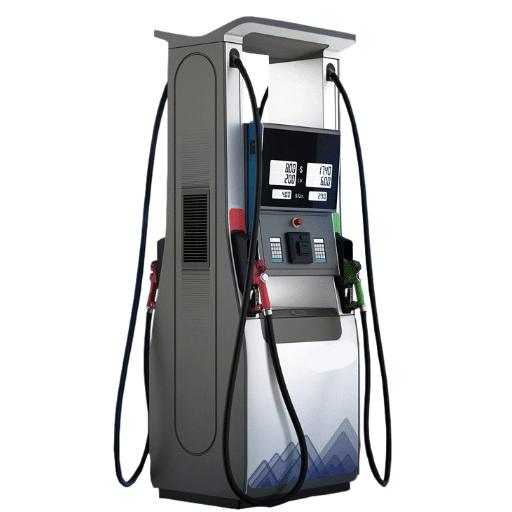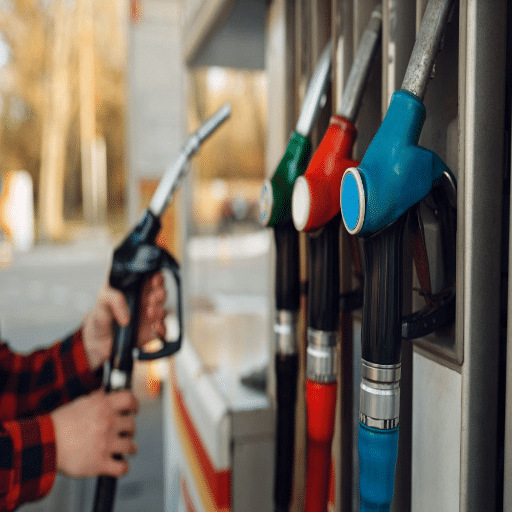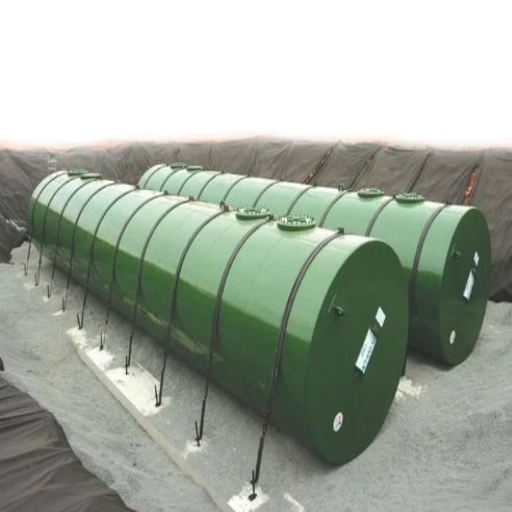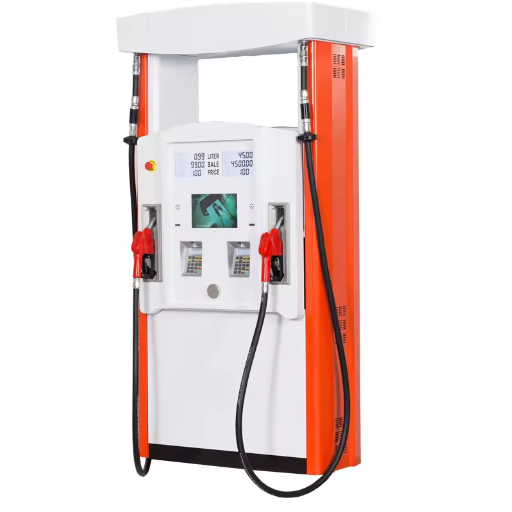Living close to a gas station is sometimes considered handy, but were you ever concerned about the possible dangers? In matters of pollution or noise, perhaps even the safety of the construction site near a gas station will significantly influence one’s health and well-being. The article considers factors that define the true notion of a “safe” distance from gas stations, with answers drawn from research-based facts supported by experts and environmental considerations. By the end of the article, you should know precisely how to determine if your home situation is safe enough to justify further considerations for you and your family.
Understanding the Hazards of Living Near a Gas Station
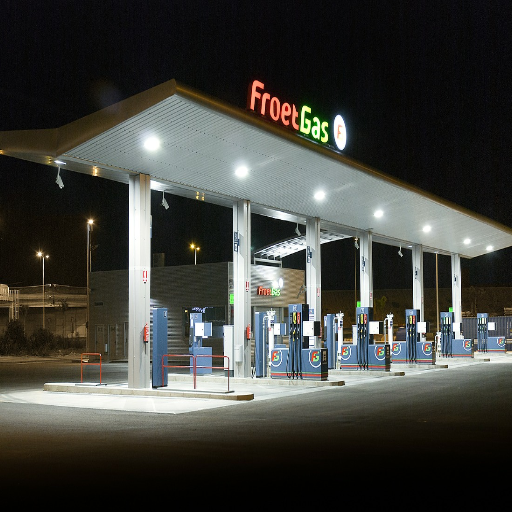
Living near a gas station could pose health risks due to the discharge of harmful substances. Gas stations release volatile organic compounds (VOCs), like benzene, as they store, dispense, and evaporate fuel. Prolonged exposure to VOCs causes respiratory disorders, headaches, and traces of cancer in severe conditions. These underground storage tanks might occasionally leak, contaminating the soil and groundwater. Having any residential place maintain a buffer of at least 500 feet from a gas station is, thus, the usual recommendation to minimize these risks. This distance helps curtail exposure to these emissions and improves the air quality in nearby communities.
The Risks Associated with Fuel Storage
While critical in many industries and daily operations, fuel storage presents risk factors with long-term environmental and health consequences. One primary concern is that fuel spills and leaks from storage tanks may contaminate the soil and groundwater. According to research, one single gallon of gasoline can contaminate 750,000 gallons of water, emphasizing the disastrous nature of such leaks. The stored fuels also release VOCs that contribute to air pollution and toxic smog formation, downplaying the quality of life of people in the affected regions.
Improper storage facilities management is also fraught with the risk of explosions. It is said that hundreds of fuel fire or explosion incidents must have occurred each year from equipment failure or human error. Besides this, the risk of underground seepage from aged and corroded, mostly underground storage tanks, frequently holding petroleum products, is more pronounced. This contamination threatens drinking water supplies and can take decades to remedy, requiring vast amounts of money for the cleanup. Fuel contamination at such a magnitude is estimated to cost the cleanup millions of dollars.
In the past years, management bodies have enacted stringent regulations that require the installation of maintenance programs for tanks, leak detection measures, and secondary containment. Nonetheless, more than the improvements mentioned above, awareness and proactive monitoring of fuel storage systems become critical in ensuring that neither pollutants result in environmental degradation nor human health is compromised.
Vapor Emissions and Health Concerns
Vapor emissions from fuel storage and distribution systems would pose a considerable health risk to workers and surrounding community members. These emissions would typically include volatile organic compounds (VOCs) such as benzene, toluene, ethylbenzene, and xylenes (commonly referred to as BTEX). Prolonged exposure or exposure to elevated levels of VOCs results in adverse health effects such as respiratory problems, headaches, nausea, and more severe effects such as liver and kidney damage, and an increased chance of cancer, especially from benzene.
Health and environmental studies have shown that ambient levels of VOCs, including benzene, near some fuel storage facilities were found to be greater than recommended limits, contrary to concerns relating to occupational safety and public welfare. For instance, benzene exposure must be controlled rigorously, considering OSHA standards (1 ppm over an eight-hour workday). Improper system design and maintenance, however, will further worsen emissions, thereby degrading air quality and establishing conditions for smog formation.
Technological advances such as the vapor recovery system (VRS) have been used to minimize VOC emissions. These systems capture vapors before they escape into the atmosphere during fuel transfer and storage operations. Constant air quality monitoring and stringent industry regulations also form the cornerstones of apprehending and minimizing these hazards. Training for stakeholders and implementing these measures can encourage safer practices, and better outcomes can be realized for public health.
Potential Groundwater Contamination
Groundwater contamination, almost always due to diversions or industrial activities, agricultural runoff, and improper waste disposal, puts an ecosystem and human health at significant risk. Groundwater contamination occurs when harmful chemicals seep into aquifers, deteriorating drinking water quality. For example, according to recent environmental studies, more than 20% of groundwater wells in certain areas show levels of nitrates due to agricultural runoff that exceed safe limits.
The leaking of underground storage tanks and industrial sites also releases hazardous substances, such as benzene and heavy metals, into groundwater supplies. According to a 2023 report, more than 30,000 active remediation sites in the United States focus on mitigating this contamination caused by industrial activities.
Should the groundwater contamination scenario be taken into account further, a monitoring well might be installed to track contamination levels, while better enforcement of waste disposal regulations could be called for. A shift to agricultural practices that limit runoff is essential. Above all, public awareness programs and state-of-the-art water treatment technology will aid in preserving groundwater resources for the future.
Determining a Safe Distance from a Gas Station
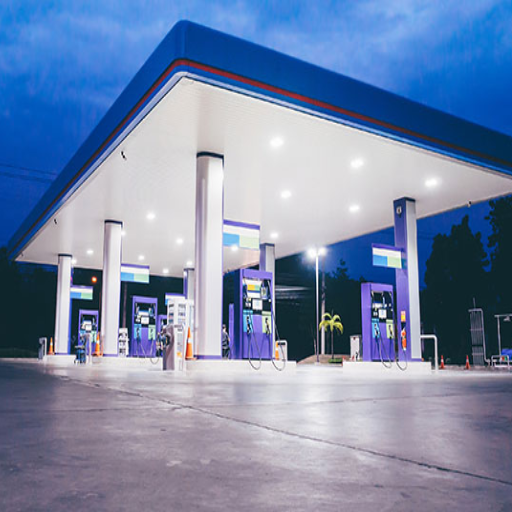
For safety reasons, it is generally recommended that people always maintain a distance of at least 100 feet from a gas station. This distance limits possible human exposure to fumes like benzene, leakages, and spillage hazards. Other safety features considered during assessment and awareness of local zoning codes for nearby residences and establishments are proper ventilation and barriers.
Recommended Distances by Experts
Environmental scientists and health safety experts say certain distances must be maintained near gas stations to minimize health risks and safety concerns. Several studies recommend a minimum distance of 100 to 300 feet for residential neighborhoods, schools, and businesses. This distance helps limit long-term exposure to pollutant chemical compounds, such as benzene, toluene, and xylene, that evaporate from gasoline in the air. According to air quality analyses, pollutant concentration begins to show significant reduction past this range, and hence, potential health risks such as those affecting respiratory systems or carcinogenic long-term effects are minimized.
According to safety guidelines, taller structures like trees or sound walls could help substantially contain emissions into nearby areas. Depending on where that is, certain regulatory bodies require specific zoning laws for gas stations with buffer zones at least 150 feet away from high-traffic pedestrian areas or sensitive locations such as schools or hospitals. These attempts are made to balance urban development and public health concerns fairly, thus keeping them fit for citizen use.
Factors Influencing Safe Distance
Several factors determine the establishment of safe distances for gas stations from sensitive locations. Air quality studies have shown that contaminants such as benzene, toluene, and other VOCs may travel far away from fuel dispensers, with concentrations at their maximum at very close range and decreasing further with distance. Research indicates that buffer zones of at least 300 feet significantly reduce the risk of exposure to harmful compounds, especially for sensitive groups like children and the elderly.
Wind patterns and weather systems further dictate the dispersal of emission sources. For instance, prevailing winds may carry pollutants deep into residential or public zones, emphasizing that local climate data should be considered within zoning policies. The urban density and vehicular traffic at gas stations contribute quite well toward vehicular emissions, which implies the need for stricter safety measures in highly populated areas. The other one is the kind of fuel infrastructure, particularly the vapor recovery system it has or does not have, which is yet another consideration in defining the level of emission mitigation and safe distances.
Environmental health agencies’ research indicates that following these principles minimizes the risk of adverse health impacts, such as respiratory difficulties and diseases resulting from long-term exposure. Such insights stress the need for an integrated approach to urban planning and community-oriented regulations to balance public safety and accessibility.
Local Regulations and Guidelines
Local air quality and environmental safety laws often align with international standards set by the WHO or the EPA. For example, PM2.5 guidelines recommend keeping the annual mean concentration below 10 µg/m³ to prevent significant health impacts. However, urban emissions from industries and vehicular sources often exceed these benchmarks.
Arguably, the best-choice cities have established low-emission zones to address the problem. For instance, London’s Ultra Low Emission Zone has reduced nitrogen dioxide levels in central London by 44%, while cities such as Paris and Berlin restrict the entry of older vehicles with higher emissions to reduce pollution. Local monitoring stations provide localized real-time data that enable quick response when hazardous levels are detected, from issuing advisories to restricting industrial operations during smog events.
Through educational campaigns and incentives, communities are encouraged to embrace renewable energy sources, such as solar energy, for sustainable living. Creating healthier and safer urban environments requires teamwork, including civic participation and enforcement of emission standards.
Impact of Gas Stations on the Surrounding Environment
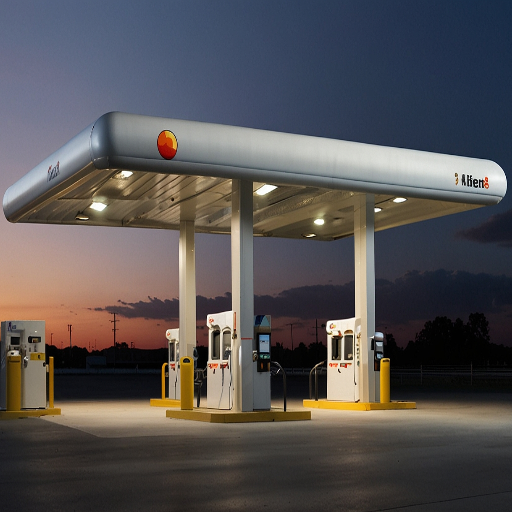
The environmental risk a gas station poses depends on whether there have been fuel leaks, vapor emissions, and runoff of contaminants such as oils and gasoline. The pollutants may contaminate the soil against their will, and local ecosystems and the drinking water supply may be threatened. The emission of VOCs from such sites may be a source of air pollution, which has adverse growth implications for human health and climate change. Proper management, including periodic equipment maintenance and compliance with environmental regulations, should be implemented as much as possible.
Effects on Local Wildlife
Industrial pollution and habitat disruption can have terrible consequences on the local wildlife populations. Various toxic substances like heavy metals, pesticides, and hydrocarbons released into the environment find their way into water bodies and soil, thereby bioaccumulating in plants and animals. An alteration of mercury levels in aquatic environments has been found to interfere with the reproductive processes of fishes; also, bird species feeding on the contaminated prey are adversely affected. Lastly, habitat fragmentation due to land development and deforestation displaces wildlife, limiting access to resources it may require for sustenance and shelter.
Biodiversity is reported to have fallen steeply in highly polluted zones. According to recent studies on biodiversity loss, 60 percent of monitored wildlife populations worldwide have shown a decline in the past 50 years; the primary reason for this decline is environmental degradation. Amphibians are an excellent example, often described as a biological indicator, with nearly a third of the species on the verge of extinction due to pollution and habitat loss. Therefore, conservation methods like restoration of natural habitats, reduction in pollutants discharged into bodies of water, and strict implementation of environmental laws will act as a potent remedy against these impacts.
Long-term Soil Contamination Risks
Long-term soil contamination is a perceived threat impacting environmental health and agricultural sustainability. Contaminants such as heavy metals, pesticides, hydrocarbons, and industrial chemicals accumulate in soils over decades, subjected mainly to mining, industrial spills, improper dumping, and misuse of agricultural chemicals. Research showed that heavy metals such as lead and cadmium remained in the soil for years, hindering plant growth. In contrast, such metals leached into water systems where they affected aquatic life and human populations that relied on these waters.
Recent reports show that 20-30% of the world’s cultivable land is under moderate to severe contamination, affecting crop yields and food safety. POPs, a common group of pollutants found in contaminated soils, can take several decades to deactivate, thus presenting further risks to human health by infiltrating the food chain via plants and animals. The cleanup of such sites often requires intensive remediation measures such as bioremediation, soil washing, and phytoremediation, which can be very costly and time-intensive. Addressing long-term soil contamination, therefore, calls for measures to be taken proactively, such as sustainable agricultural practices, industrial discharge regulations, and awareness of soil health issues.
Case Studies of Contamination Incidents
Minamata Disaster in Japan: One of the most notorious instances of soil-water pollution, Minamata has its history in the mid-1900s. For a period amounting to three plus decades, the Chisso Corporation released methylmercury, contaminating the marine life ecosystems in Minamata Bay and the surrounding areas, including the local soils. This toxicant entered the food chain through fish and shellfish, rendering deleterious effects on health to local human beings in the form of neurological impairment- Minamata disease, and congenital defects. By the ’70s, 2,265 plus victims were certified, and to avert further deterioration, the site was subjected to huge-scale soil and water remedial works.
Love Canal in the United States: The Love Canal disaster is an environmental landmark in the United States of America. It occurred near Niagara Falls, New York, in the late 1970s. More than 21,000 tons of toxic industrial waste were dumped into the area by a chemical company; later, some of the waste seeped into the soil and groundwater, thus affecting the residential communities nearby. Health-wise, due to the unabating conditions, there were miscarriages, birth defects, and others. This set off the establishment of the Comprehensive Environmental Response, Compensation, and Liability Act (CERCLA) by the United States Government, which is also known as the “Superfund” law, to deal with and fund the clean-up of hazardous waste sites.
Arsenic Contamination in Bangladeshi Aquifers: Bangladesh is going through widespread arsenic contamination, affecting millions relying on groundwater for drinking and irrigation. Improper exploration allied to overexploitation caused arsenic to leach naturally from the soil into water supplies. The health repercussions include skin lesions, cancers, and cardiovascular complications. Arsenic-filtering projects have been started to combat this crisis, tube wells are being tested, and alternative water sources are being deliberated over.
E-waste Dumping at Agbogbloshie: Agbogbloshie, among the biggest dumps of electronic waste worldwide, sheds light on extreme contamination occasioned by improper ways of e-waste disposal. Toxic chemicals such as lead, cadmium, and mercury in dumped electronics have been leaching through the soils to pollute the environment and endanger public health. Studies have proven a very contaminated soil state-the levels of lead concentration go up even ten times above what is deemed safe. Health woes for both workers and populations nearby are mostly respiratory problems, neurotoxic damage, and later development of long-term diseases. Santa-cleaning exercise is, however, limited at this stage; worldwide discussions toward responsible e-waste recycling are thus gaining a foothold in redressing such inequities.
These case studies show the harrowing consequences of environmental neglect and emphasize the need for a panoptic view and antitoxin action to confront worldwide soil and ecosystem contamination threats.
Mitigating Risks of Living Near a Gas Station
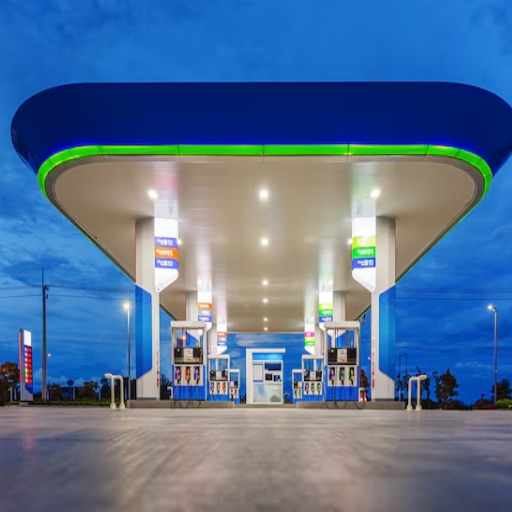
Once adverse health and environmental risks have been posed in the environs of a local gas station, a prudent housekeeping approach will consider their remediation. One would consider proper ventilation in the house, enabling indoor air quality monitoring, and sealing any cracks in the walls or foundation to minimize exposure to harmful fumes. Periodic inspections of underground storage tanks reduce the impact of non-compliant disposal of effluents affecting the land and water in your community, acting as good neighbors, aside from promoting the enforcement of environmental regulations. Advocating for green buffer zones to shield local populations from direct exposure to gas station operations will improve the area’s safety and quality of life.
Choosing the Right Property
Choosing a property requires an attentive evaluation of specific factors to guarantee its fulfillment of your needs, safety, and sustainable long-term goals. Start with the location: one with sufficient connectivity to schools, hospitals, shopping, and work sites generally enables a better quality of life. Due diligence about neighborhood crime is also necessary, and environmental hazards are a safety priority for any homebuyer or renter.
Another aspect to consider is the state of public infrastructure. Search for homes that are well-made with good materials, are energy-efficient, and have contemporary amenities. Energy efficiency has drawn much attention recently, as studies have indicated that such a home can minimize utility bills by up to 25 percent on average through reductions in electricity consumption from appliances, lighting, and HVAC systems. Check other things like insulation, ventilation, and renewable energy installations such as solar panels, which contribute far more to savings over time.
When buying investment property, an investor must also be knowledgeable about the local market trends. Data shows that properties in areas witnessing further job growth and increasing housing demand tend to give higher returns. It would also pay off to consider future development plans within the region, as upon completion, neighboring infrastructure like new roads, an expansion of the public transit system, or a new commercial center would increase the property value.
Inspection, in the end, should never be compromised. Give close attention to matters relating to structural integrity, plumbing, and electrical systems, as well as indicators of wear and tear. At least you must hire inspectors who are experts to alert you of issues that are invisible to the naked eye, yet may cost you in terms of repair in the future. By analyzing these factors carefully, you may make an informed choice toward procuring a property suitable for your lifestyle and investment goals.
Monitoring Environmental Conditions
Environmental considerations must be maintained for long-term value and livability while picking a property. First comes understanding the weather or the climatology, the regional range of expected average temperature, precipitation, and the chance of extreme weather events. For example, buyers of promising performances must ensure they can compensate, primarily for flood risks, including construction with elevated foundations or procurement of flood insurance.
Air quality is another primary consideration affecting health and comfort. Areas near major highways or an industrial zone can see higher concentrations of pollutants. By checking historical records and hazard maps, one also has to consider and review the possibility of natural disasters hitting a specific location, such as earthquakes, hurricanes, or wildfires.
Lastly, the presence of green infrastructure, with a lower ecological footprint status for the entire neighborhood, must be checked. Adjacent properties to green areas such as parks, forests, or water bodies can compensate a little for lower living quality and even sell faster. By assessing these various aspects, one can judge the environmental suitability of a property and thus stave off future disappointment.
Community Awareness and Advocacy
Community awareness and advocacy for a sustainable and inclusive environment were discussed locally. Educating our citizens about climate change, pollution control, and conservation will motivate collective action toward protecting natural resources. Studies indicate that neighborhoods with community clean-up initiatives tend to record waste reduction and increased recycling rates, thereby offering a cleaner environment.
Advocacy could be directed to social injustices, such as those that discriminate against people seeking access to affordable housing, clean water, and public transit. Some contemporary studies evidence that areas in an urban setup with reasonable advocacy programs report improved air quality and reduced carbon emissions owing to policies promoting renewable energy and environmentally friendly transport systems. Community clean-up activities and tree-planting exercises foster awareness that actively helps the environment.
Developing partnerships between local governments, non-profit organizations, and citizens will further empower advocacy communities. Collaborative programs have done wonders in raising the percentage of green spaces in cities and helping lower urban heat islands. After all, empowering communities by relieving them from the void with actionable knowledge and directions to kick-start their movement is essential for building resilient and thriving communities.
Regulatory Guidelines on Safe Distances
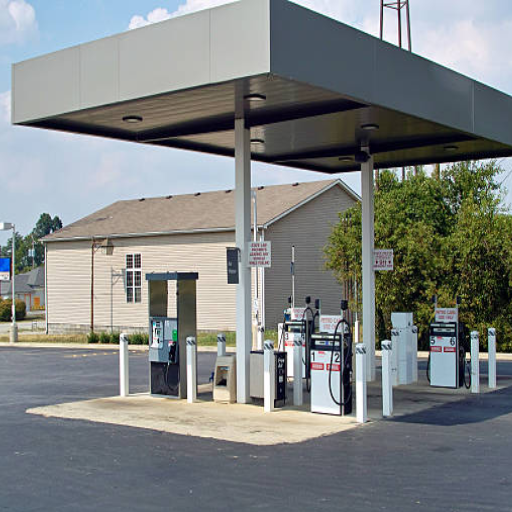
Safe distance regulations are set to minimize hazards and preserve safety in various environments. For residential settings, industrial plants, or utility lines, generally keep a buffer zone of around 50 to 300 feet, depending on the severity of the hazard. Traffic safety instructions recommend that the distance between vehicles be about two seconds or more for good weather conditions, with increased distance to four seconds or more for adverse weather conditions. At construction sites, safety standards prescribe maintaining a clear perimeter around hazardous equipment, the specified distances varying based on the construction equipment specification and hazard evaluation. These are provided by a statutory body, such as OSHA and local governmental bodies, so the persons and communities sandwiched within them will be safer.
Local Regulations and Recommendations
When discussing local safety regulations, regions often maintain that public safety is enhanced with clear rules. As such, in an urban setting, speed limits in residential neighborhoods are set anywhere from 20 to 25 mph for pedestrian and cyclist safety, while such limits in school zones can be stricter during operational hours and may even go down to 15 mph. Similar regulations are usually set in construction zones where signage must be appropriately marked to ensure workers’ and pedestrians’ visibility and safety.
Occupational safety standards in industries like manufacturing and construction specify types of PPE, which include helmets, gloves, and high-visibility garments. Several studies have proven that workplace injuries in sectors where PPE is strictly enforced are reduced considerably, sometimes even by 30%. Fire safety codes in commercial buildings often require sprinkler systems and organized fire drills, and inspections are held for compliance.
On the other hand, measures to ensure environmental safety involve disposing of waste and controlling emissions for community health. For example, many cities have passed ordinances that curb single-use plastics and encourage recycling, with estimates showing a 20% decrease in landfill waste after implementation. Together, these recommendations hope to provide safer and healthier living conditions in their local communities.
National Standards for Gas Stations
Regarding the accepted standards for gas stations, I ensure compliance with regulations regarding storage tanks, spill prevention, and emission control. Hence, equipment is maintained and inspected, staff are trained, and efforts are made to minimize environmental impact, including vapor recovery and waste disposal. These standards depend on safety, environmental considerations, and operational efficiency.
Case Studies of Contamination
Contamination cases at fueling stations generally occur due to leaks or spills from underground storage tanks, whether due to aging infrastructure or human error. One particular case in Santa Monica, California, witnessed extensive groundwater contamination due to gas station leaks and subsequent costly remediation steps and stricter regulations. Likewise, in Jacksonville, Florida, a fuel spill resulted in soil and water contamination, demanding heavy cleanup and disturbing the ecosystems around. Another example is a sweeping case in Connecticut, where hundreds of USTs were found to be leaking over a period, thus triggering a statewide effort to upgrade the infrastructure and actively monitor compliance. These cases highlight the importance of vigilant storage practices, regular inspections, and quick interventions to spare damage to the environment and the economy caused by fuel contamination.
Reference Sources
1. Petroleum Filling Stations and Their Impact on the Environment in Nigeria (2022)
Frequently Asked Questions (FAQs)
Q1: Why is it important to consider distance when living near a gas station?
A1: Gas stations can emit harmful substances like benzene, a known carcinogen, into the surrounding air and soil. Proximity to these emissions may increase health risks, particularly for vulnerable populations such as children or individuals with pre-existing health conditions.
Q2: What is the recommended safe distance to live from a gas station?
A2: Studies suggest that living at least 100-300 feet from a gas station can reduce exposure to harmful pollutants. However, local regulations and environmental assessments may provide more precise guidance based on regional factors.
Q3: Are there additional safety concerns besides air quality?
A3: Yes, safety concerns may include fuel spills, underground storage tank leaks, or potential fire hazards. Proper monitoring and compliance with safety regulations at the gas station can help mitigate these risks.
Q4: How can residents assess the safety of their proximity to a gas station?
A4: Residents can consult local environmental agencies or review ecological impact studies. Additionally, routine testing of the surrounding soil and water quality can provide insight into potential hazards.
Q5: How can individuals reduce exposure if they live near a gas station?
A5: Practical steps include sealing windows and doors, using air purifiers, and regularly testing indoor air quality. Communicating concerns to local authorities and advocating for proper regulation enforcement can also help maintain safety.

